UPSC Daily Current Affairs: 17th April 2025 | Current Affairs & Hindu Analysis: Daily, Weekly & Monthly PDF Download
GS3/Environment
Mount Lewotobi Eruption
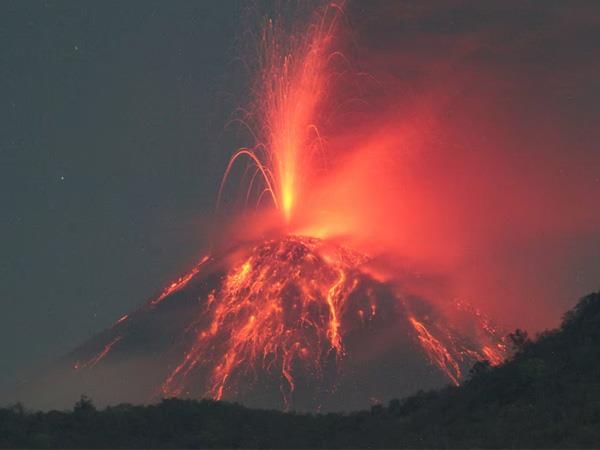 Why in News?
Why in News?
Mount Lewotobi, located in Indonesia's East Nusa Tenggara province, has recently erupted, leading to the issuance of a flight warning and various safety advisories for the surrounding areas.
- Mount Lewotobi is one of the most active volcanoes in the East Nusa Tenggara province.
- The volcano features two prominent peaks known as Lewotobi Lakilaki and Lewotobi Perempuan.
- Recent eruptions have raised safety concerns for aviation and local populations.
Additional Details
- Geographical Location: Mount Lewotobi is situated on Flores Island within Indonesia’s East Nusa Tenggara province, along the Pacific's famous 'Ring of Fire.'
- Volcanic Features: The twin peaks are arranged in a NW-SE line, separated by 2 km, with a 1232 m high saddle. Lewotobi Lakilaki reaches 1584 m with a summit crater of 400 m in diameter, while Lewotobi Perempuan stands at 1703 m with a 700 m wide crater.
- The volcanoes have shown frequent activity during the 19th and 20th centuries, with Lewotobi Perempuan having erupted only twice in recorded history.
- Small lava domes have formed in the summit craters of both volcanoes during the 20th century.
- A notable flank cone, known as Iliwokar, is located on the eastern side of Lewotobi Perempuan.
This recent activity serves as a reminder of the geological volatility of the region, emphasizing the importance of monitoring such natural phenomena for safety and preparedness.
GS2/Polity
MacGregor Memorial Medal
Why in News?
Recently, five military personnel were awarded the MacGregor Memorial Medal by the Chief of Defence Staff for their exceptional contributions in military reconnaissance, exploration, and adventure during the years 2023 and 2024.
- The MacGregor Memorial Medal honors significant achievements in military reconnaissance and exploration.
- It has been awarded since 1888, originally focusing on expeditions in regions such as Central Asia and Tibet.
- The award is now open to all ranks within the Indian Armed Forces, including retirees.
Additional Details
- About the Medal: Instituted on 03 July 1888 in memory of Gen. Sir Charles Metcalfe MacGregor, the medal began as a recognition for military expeditions and has evolved to include adventure activities.
- The medal has notable past recipients, including Capt F E Younghusband (1890) and Maj. Gen. Orde Charles Wingate (1943).
- United Service Institution of India (USI): Founded in 1870 by Col. (later Maj Gen) Charles Metcalf MacGregor, the USI is the oldest autonomous think tank in India, focused on advancing military knowledge and professional development.
This award not only recognizes individual bravery and contribution but also highlights the rich history and evolution of military honors in India, reflecting the country's commitment to honoring excellence in defense services.
GS2/International Relations
Shaping a Response to the U.S.’s Reciprocal Tariffs
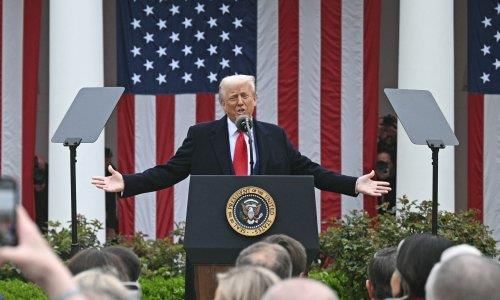 Why in News?
Why in News?
The announcement of reciprocal tariffs by U.S. President Donald Trump has significantly impacted global trade discussions. These tariffs signify a shift towards a more assertive and country-specific trade policy, particularly affecting emerging economies like India, which necessitates a comprehensive analysis of both the intent and consequences of these tariffs.
- The new tariff regime includes existing commodity-wise import tariffs and an added reciprocal tariff applicable uniformly across all goods from each country.
- India faces a reciprocal tariff rate of 26% due to its trade imbalance with the U.S., impacting key sectors.
- Strategic recalibration of imports and proactive diplomatic engagement can help India navigate the challenges posed by these tariffs.
Additional Details
- Understanding the New Tariff Regime: The reciprocal tariff is capped at 10% for a 90-day review period, except for China. It is calculated using a formula that emphasizes trade imbalance, resulting in a 26% tariff for India based on its trade figures.
- India’s Export Vulnerabilities: India has moderate exposure to U.S.-bound exports, with key sectors such as electrical machinery, textiles, and gems likely affected. However, the presence of similar tariffs on competitors may level the playing field.
- Calibrating India's Response: Rather than engaging in a retaliatory tariff war, India can lower its reciprocal tariff by increasing imports from the U.S. in sectors like petroleum, potentially reducing the rate to 11.8%.
- Proactive Consultations: India should engage with U.S. officials to seek a trade framework that serves both nations’ interests while remaining vigilant against 'dumping' from other countries.
- The Role of the WTO: The current tariff fluctuations highlight the need for reforms within the WTO to restore stability in global trade and promote universally low tariff structures.
In conclusion, President Trump’s reciprocal tariffs reflect a shift towards nationalistic trade policies. For India, the focus should be on pragmatic strategies—adjusting imports, engaging diplomatically, and aligning with global trade norms—to turn these challenges into opportunities for economic repositioning. Long-term, reinforcing multilateralism through WTO reform is essential to counter rising protectionism.
GS3/Science and Technology
Type 5 Diabetes
 Why in News?
Why in News?
Type 5 diabetes has recently been officially recognized as a distinct form of diabetes by the International Diabetes Federation (IDF), highlighting its significance in the medical community.
- Primarily affects lean, undernourished teenagers and young adults in low- and middle-income countries (LMICs).
- Caused by malnutrition-induced reduction in insulin production, differing from Type 2 diabetes, which involves insulin resistance.
- Characterized by abnormal pancreatic beta cell function leading to severely reduced insulin secretion.
- Has been long neglected in medical research and is often misdiagnosed.
Additional Details
- Historical Background: The condition was first reported in Jamaica in 1955 under the term J-type diabetes. In 1985, the World Health Organization (WHO) referred to it as “malnutrition-related diabetes mellitus,” although this designation was retracted in 1999 due to a lack of causal evidence linking malnutrition to diabetes.
- Despite its retraction, similar cases have been reported in various countries, including India, Sri Lanka, Bangladesh, Uganda, Ethiopia, Rwanda, and Korea, primarily in the Global South.
- Estimated to affect around 25 million people globally.
Clinical Markers of Type 5 Diabetes
- No autoimmune or genetic cause: This condition does not have an identified autoimmune or genetic basis.
- Patients typically have a very low BMI (<18.5 kg/m²),="" significantly="" lower="" than="" that="" of="" typical="" type="" 2="" diabetic="">
- Insulin levels are extremely low, which is much lower than in Type 2 diabetes and slightly above Type 1 diabetes.
- Body fat percentage in Type 5 patients is substantially lower than in Type 2 patients.
- Dietary intake in affected individuals is notably inadequate in terms of protein, fiber, and essential micronutrients.
This recognition of Type 5 diabetes emphasizes the need for increased awareness, research, and tailored treatment strategies for affected populations, particularly in low-resource settings.
GS2/Polity
Supreme Court Flags Key Issues in Waqf Law Amid Rising Legal and Social Debate
Why in News?
The Supreme Court of India has raised significant questions regarding certain provisions of the Waqf (Amendment) Act, 2025, as it considers over 100 petitions challenging the law's constitutional validity.
- The Supreme Court has expressed concerns over three critical provisions of the Waqf (Amendment) Act, 2025.
- Petitioners argue that the amendments could lead to the erasure of numerous waqf properties and violate constitutional rights.
- The government has defended the law, asserting that it aligns with historical regulations on waqf properties.
Additional Details
- Waqf-by-user Denotification: The 2025 Act removes legal recognition for waqf-by-user properties, which have been used for religious or charitable purposes for generations but lack formal registration. This change could affect approximately 4 lakh out of 8 lakh existing waqf properties.
- Non-Muslims in Waqf Bodies: The Act permits non-Muslims to serve as ex-officio members of the Central Waqf Council and State Waqf Boards, raising concerns about the governance of religious institutions by those outside the faith.
- Collector’s Determination of Property Status: District Collectors are granted the authority to classify properties as waqf or government land, which could lead to conflicts of interest and jeopardize due process.
- The Chief Justice of India proposed a three-point interim order to balance interests, including maintaining the status of properties already declared as waqf until further judicial review is conducted.
The Supreme Court's intervention highlights the delicate balance between legislative authority and religious autonomy, particularly concerning the management of waqf properties. The case continues to develop as arguments are further presented in court.
GS2/Polity
History and Evolution of the Office of Governor
Why in News?
The recent Supreme Court verdict regarding the powers of the President and Governors, particularly concerning assent to Bills under Articles 201 and 200, underscores the evolving nature of the Governor's office and its significance in India's federal structure.
- The office of the Governor was formally established in 1858 under the Government of India Act.
- Significant reforms occurred through the Montagu-Chelmsford Reforms (1919) and the Government of India Act (1935).
- Post-independence, the role of the Governor transitioned towards a more symbolic constitutional function.
Additional Details
- Formal Establishment (1858): The office was created to shift administration from the East India Company to the British Crown, with Governors acting as agents of the Crown and possessing extensive powers in provincial administration.
- Montagu-Chelmsford Reforms (1919): The Government of India Act aimed to enhance Indian participation while retaining significant central control, including the Governor's veto power over legislative council bills.
- Government of India Act (1935): Introduced provincial autonomy but maintained the Governor's discretionary powers, allowing for vetoing bills and withholding assent, reflecting a complex balance of authority.
- Post-Independence Transition (1947): The India (Provisional Constitution) Order modified the 1935 Act by reducing the Governor's discretionary powers, marking a shift towards a more symbolic role.
- Constituent Assembly Debates: Discussions centered on whether Governors should be elected or nominated led to the decision to nominate Governors to uphold national unity, especially after partition.
- Constitutional Role: Article 163 mandates that the Governor acts on the advice of the Council of Ministers, with limited discretionary situations.
- Ambedkar’s Views: Dr. B.R. Ambedkar emphasized limited use of discretionary powers to align the Governor's actions with elected government advice.
- Article 200: The Governor must grant assent to Bills but can withhold assent or reserve them for the President, as amended by Ambedkar in 1949 to ensure alignment with the elected government.
- Symbolic Role: The Governor is expected to represent the Union and support democratic functioning, remaining non-intrusive in state affairs.
- Discretionary Powers: The Governor's discretion is constitutionally limited, intended for sparing use to maintain a constitutional rather than a political role.
In summary, the office of the Governor has undergone significant evolution from a position of substantial power during colonial rule to a more ceremonial role within the framework of India's democratic governance, reflecting the changing dynamics of federalism in the country.
GS3/Defence & Security
Navy-Marine Expeditionary Ship Interdiction System (NMESIS)
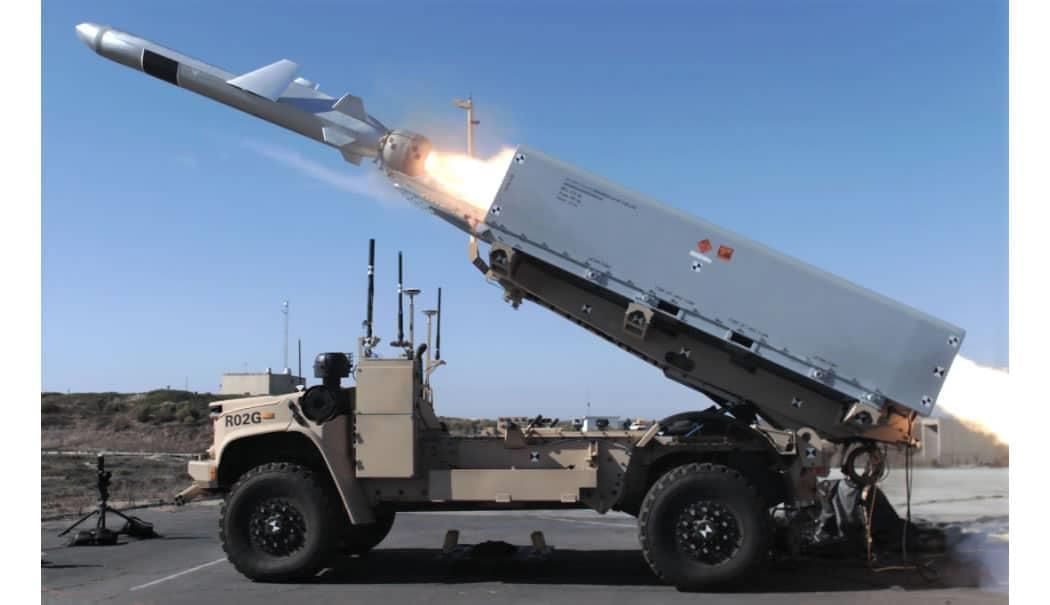 Why in News?
Why in News?
The Philippines has recently confirmed the deployment of the United States' anti-ship missile system, NMESIS, for the upcoming Balikatan military exercises this year.
- NMESIS is designed for the US Marine Corps (USMC) to facilitate land-to-sea attack operations by the US Navy.
- The system features the US Navy's latest anti-ship missile, the Naval Strike Missile (NSM), mounted on an unmanned variant of the Oshkosh Joint Light Tactical Vehicle (JLTV).
Additional Details
- Ground Vehicle Platform: The NMESIS utilizes the Remotely Operated Ground Unit for Expeditionary (ROGUE) Fires vehicle, which is supplied by Oshkosh Defense, United States.
- Manufacturing: The NSM is produced in collaboration between Raytheon Missiles & Defense (United States) and Kongsberg Defence & Aerospace (Norway).
- Operational Control: NMESIS is operated by a US Marine who is responsible for mission planning and missile firing; it is not considered an autonomous launcher.
The NSM is a multi-mission cruise missile capable of accurately targeting both maritime and land-based threats. It can engage enemy vessels located over 100 nautical miles (approximately 185 kilometers) away. Equipped with an advanced seeker, the missile offers high-precision targeting capabilities while employing evasive maneuvers to evade enemy radar systems by flying close to sea level. The missile carries a warhead weighing 226.79 kg and features a programmable fuse for enhanced effectiveness.
GS2/International Relations
How China is Fighting U.S. Tariffs
Why in News?
Recently, China’s clever response to Trump's trade war has highlighted its long-term strategic planning. This approach has enabled China to effectively manage one of the most significant trade tensions in recent history, demonstrating resilience against aggressive trade policies from major partners like the U.S.
- Trump’s "America First" trade policy includes the imposition of reciprocal tariffs.
- The U.S. aims to negotiate bilateral trade deals rather than multilateral agreements.
- Implementation of reciprocal tariffs was postponed to facilitate trade negotiations with India.
- The U.S. faces challenges in negotiating with countries like India due to tariff and regulatory differences.
- Global economies are exploring ways to counter U.S. trade unilateralism.
Additional Details
- Imposition of Reciprocal Tariffs: The U.S. enacted tariffs on imports from countries with higher duties on American goods. For instance, a 34% tariff was imposed on Chinese products, prompting retaliation from China.
- Push for Bilateral Trade Deals: Trump prefers negotiating directly with individual countries instead of engaging in multilateral discussions to secure more favorable terms. He has delayed tariffs for 90 days to apply pressure on 57 countries to enter bilateral agreements.
- Targeting Trade Deficits: The aim is to reduce U.S. trade deficits by demanding increased access to foreign markets, including requests for India to open its agricultural market.
- Postponement of Tariffs: The U.S. delayed the implementation of reciprocal tariffs to create a favorable environment for trade negotiations with India, aiming for a bilateral trade volume of $500 billion by 2030.
- Challenges in Negotiating with India: The U.S. faces hurdles due to India’s higher tariffs on several goods and strict regulatory environments, particularly in agriculture and dairy sectors.
- Responses to U.S. Trade Unilateralism: Countries are encouraged to strengthen regional trade blocs, file disputes through the WTO, and promote strategic bilateral partnerships to counterbalance U.S. influence.
In conclusion, as global trade dynamics shift, the need for multilateralism and cooperative agreements becomes increasingly important. Countries must work together to reform the WTO and create trade partnerships that promote equitable and balanced growth for all nations, especially those in the Global South.
GS3/Science and Technology
India’s First-Ever Seed Germination Database
Why in News?
On April 16, 2025, the Ecological Restoration Alliance-India (ERA-I) unveiled a pioneering seed germination database designed to improve the success rates of growing native plants for ecological restoration efforts.
- The database was launched by the ERA-I, established in July 2021 as a collaborative network of practitioners and ecologists.
- It includes over 1,000 germination techniques for 465 native plant species found throughout India.
- This resource is aimed at assisting restoration practitioners, nursery managers, and native plant enthusiasts.
- The database is available for free, providing crucial information for germinating native plants essential for restoration projects.
Additional Details
- Native Plants Included:The database features diverse native species such as:
- Aegle marmelos (Wood apple)
- Bauhinia racemosa (Beedi leaf tree)
- Ficus benghalensis (Banyan)
- Withania somnifera (Ashwagandha)
- Ziziphus mauritiana (Indian jujube)
- Knema attenuata (Wild nutmeg)
- Lawsonia inermis (Henna)
- Madhuca longifolia (Mahua)
- Vachellia nilotica (Babool)
- Native plants are crucial for establishing climate-resilient ecosystems, and this database plays a significant role in that effort.
- The database supports India’s commitment to the Bonn Challenge, which aims to restore 26 million hectares of degraded land by 2030.
In the context of enhancing food and nutritional security in India, the improvement of 'Seed Replacement Rates' for various crops is vital for meeting future food production targets. However, several constraints hinder its broader implementation:
- There is currently no National Seeds Policy in place.
- Lack of participation from private sector seed companies in supplying quality seeds for vegetables and horticultural crops.
- A significant demand-supply gap exists regarding quality seeds for low-value, high-volume crops.
Select the correct answer using the code given below:
- (a) 1 and 2 only
- (b) 3 only
- (c) 2 and 3 only
- (d) None of the above
GS2/Polity
Strengthening Federalism - Supreme Court’s Landmark Judgment in Tamil Nadu Governor Case
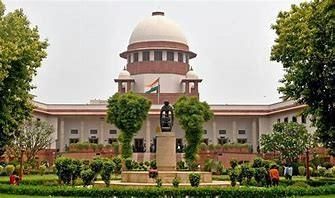 Why in News?
Why in News?
The Supreme Court's judgment delivered on April 8 in the case of State of Tamil Nadu vs The Governor of Tamil Nadu is a significant moment in Indian legal history. It reinforces the federal structure of the Constitution and curtails the overreach of governors, emphasizing that India operates as a “Union of States” where elected governments should not be undermined by unelected authorities.
- The judgment highlights the importance of federalism and the need to limit gubernatorial powers.
- It addresses constitutional ambiguities and the centralization of power since 2014.
- The Supreme Court's use of Article 142 signifies a judicial innovation to protect legislative actions.
Additional Details
- Context of the Case: The Tamil Nadu Governor withheld assent for 10 important bills, some dating back to 2020, affecting state universities and critical sectors post-COVID.
- Role of Current CM: The Chief Minister re-passed all 10 bills verbatim, signaling a strategic move for federal integrity.
- Judicial Innovations: The Supreme Court invoked Article 142 to deem the bills as having been assented to as of the date they were re-passed, countering executive obstruction.
- Malafide Conduct: The Court criticized the Governor for returning bills at the last moment, which was seen as procedural manipulation.
- Landmark Cases Referenced: The ruling referenced key cases that reinforce the power of elected representatives and the basic structure of the Constitution.
- Defining Limits: The judgment clarified that neither the President nor the Governor has an absolute or pocket veto over state legislation, thus ensuring accountability.
This landmark ruling is a victory for all states and citizens, reinforcing the concept of cooperative federalism. It is crucial for fostering collaboration between states and the Union, especially in today's complex global and economic landscape.
GS3/Infrastructure
Silkyara Bend-Barkot Tunnel
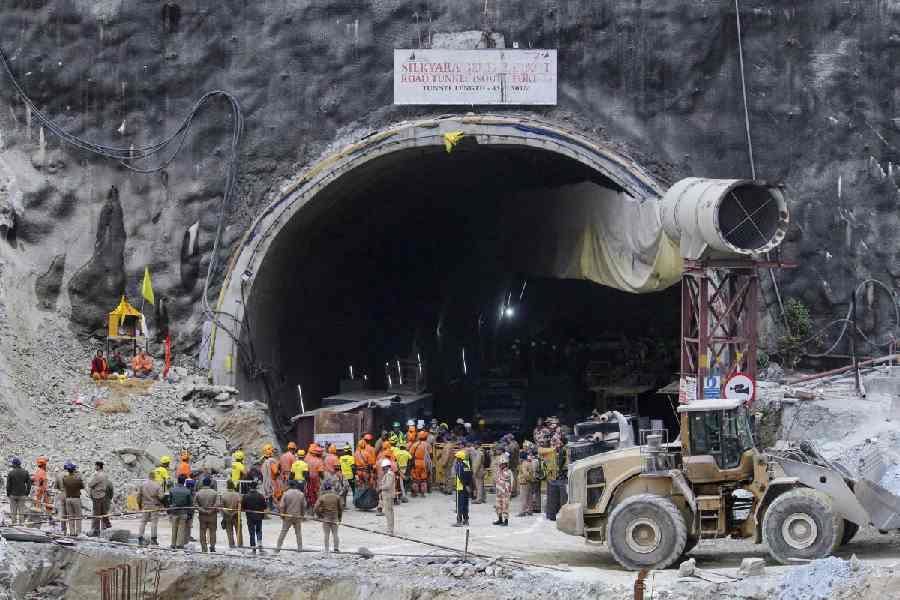 Why in News?
Why in News?
The breakthrough in the Silkyara Bend-Barkot road tunnel has recently been announced as a historic milestone by the Union Minister of Road Transport and Highways. This transformative project is expected to significantly reduce travel time by one hour.
- The tunnel is 531 km long and designed as a two-lane bi-directional tunnel.
- It features an escape passage for safety.
- Located on the Dharasu-Yamunotri section in Uttarakhand, it connects Barkot and Silkyara.
- The project is part of NH-134 (formerly NH-94) and is being constructed using the Engineering, Procurement, and Construction (EPC) mode.
Additional Details
- Excavation Details: Approximately 90% of the tunnel is being excavated in phyllite, a type of weak rock.
- Construction Method: The New Austrian Tunnelling Method (NATM) is employed, utilizing advanced monitoring and wall reinforcement techniques based on rock type.
- This project is funded under the National Highway (Original) [NH(O)] Scheme by the Ministry of Road Transport & Highways.
- It is a crucial component of the Chardham Plan, aimed at improving accessibility, especially during adverse weather conditions.
Located just about 50 km from this tunnel, it will facilitate easier access for devotees traveling to Badrinath and Kedarnath.
GS2/Governance
Call for Permanent Settlement for Tribals
Why in News?
The plight of the Gond tribals in India highlights a complex interplay of historical displacement, governmental neglect, and the quest for identity and dignity, particularly in the context of counter-insurgency operations and bureaucratic indifference.
- The displacement of approximately 50,000 Gond tribals in 2005 from Chhattisgarh to Andhra Pradesh is emblematic of ongoing issues with forced relocations.
- Despite their displacement, these tribal communities have become crucial in state military operations against Maoists.
- The lack of legal frameworks and bureaucratic inertia has left displaced tribes vulnerable and stateless.
- There is a pressing need for recognition and rehabilitation of these communities to address historical injustices.
Additional Details
- Historical Context: The forced relocation policy, mirroring U.S. strategies from the Vietnam War, has historically alienated the tribal populations, failing to integrate them into mainstream society.
- Exploitation Risks: Gutti Koya tribals have inhabited illegally occupied forest land for nearly two decades, facing exploitation from various quarters due to their unresolved legal status.
- Bureaucratic Apathy: Although the Forest Rights Act (FRA) offers pathways for rehabilitation, its implementation has been ineffective, leaving many applications unprocessed.
- Denial of Identity: Host states classify displaced tribals as 'migrants,' denying them essential benefits and legal protections, which perpetuates poverty and marginalization.
The ongoing struggles of the Gond tribals serve as a critical reminder of the human costs associated with state security strategies and bureaucratic neglect. As the deadline for resolving the Maoist insurgency approaches in 2026, it is crucial for both central and state governments to implement comprehensive rehabilitation measures that honor the rights and identities of these displaced communities.
|
44 videos|5250 docs|1108 tests
|
FAQs on UPSC Daily Current Affairs: 17th April 2025 - Current Affairs & Hindu Analysis: Daily, Weekly & Monthly
| 1. What were the main impacts of the Mount Lewotobi eruption? |  |
| 2. What is the MacGregor Memorial Medal, and who is eligible to receive it? |  |
| 3. How do reciprocal tariffs affect international trade relations? |  |
| 4. What are the current challenges in managing Type 5 diabetes? |  |
| 5. What were the key issues highlighted by the Supreme Court in the Tamil Nadu Governor case? |  |
















